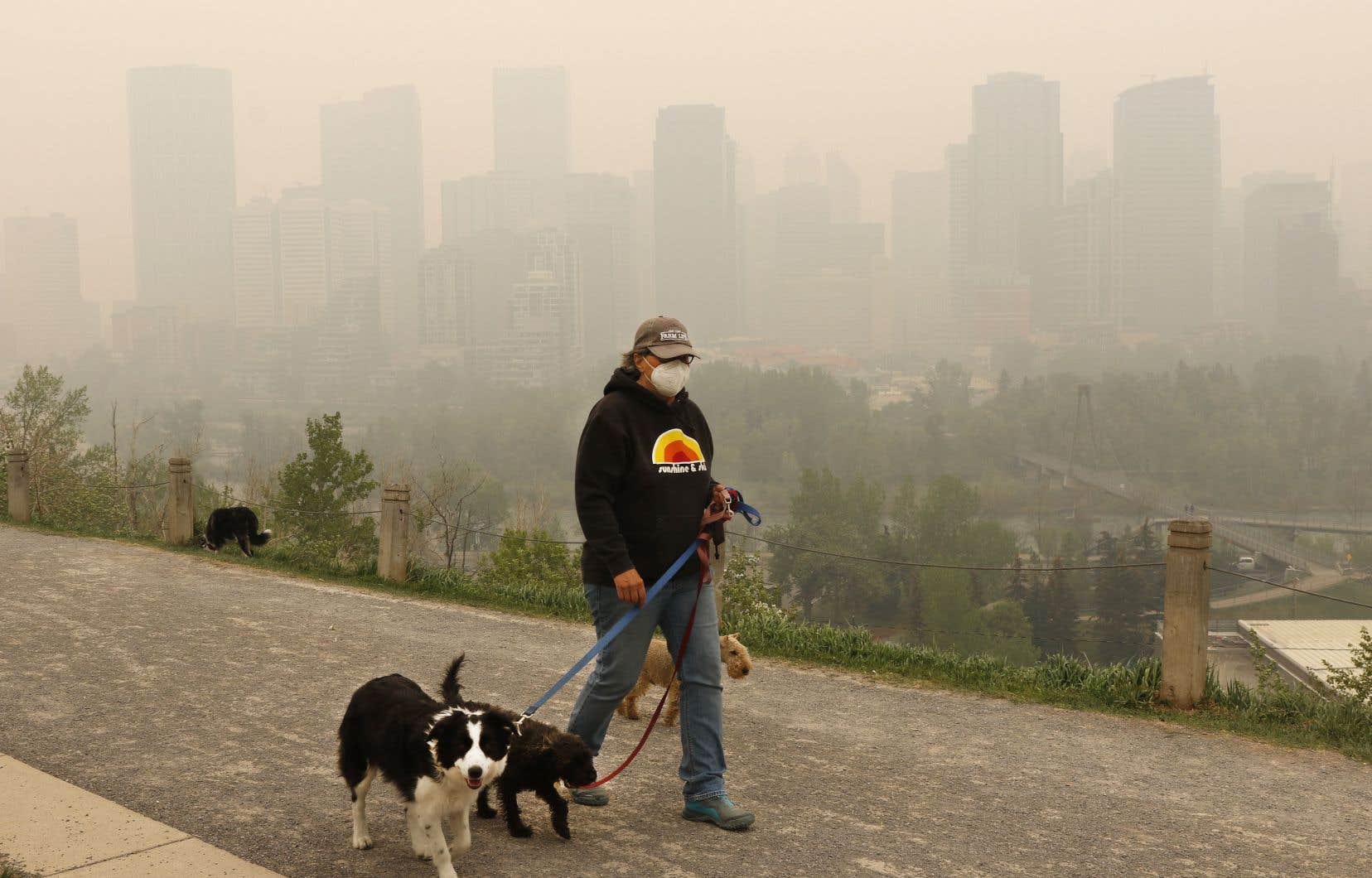Despite the thousands of Albertans evacuated and the fear that the weather will allow forest fires to escalate for weeks more in this corner of the country, the authorities do not plan to cancel or postpone the May 29 provincial election.
“We are still assessing the impacts of the fires to determine if any voting locations have been lost,” Elections Alberta spokeswoman Robyn Bell said in an email Tuesday.
The general elections to be held at the end of the month are not compromised. The law gives the Chief Electoral Officer of Alberta the right to ask the court to suspend the vote in an electoral district, if he demonstrates that he is unable to ensure the holding of the vote. A judge must approve the idea.
“It is important to note that there are 87 electoral divisions, and requests to interrupt the vote must be made for each individual division,” adds Mr.me Bell.
On Tuesday, only one returning office had closed, in Valleyview in the riding of Central Peace-Notley, in the northwest of the province. Its operations have been moved to its satellite office in the village of Fairview, and the election campaign there is currently continuing as planned.
“Where a voting location is inaccessible, we will identify one or more alternative voting locations, depending on where the voters have been relocated,” promises the Alberta electoral authority’s website, which also offers voting by mail.
The province of Alberta declared a state of emergency because of the multiplication of forest fires ten days ago. She then made a request for assistance to the federal government, which deployed 300 soldiers. Quebec, for its part, dispatched a force of 70 firefighters to fight the fires. Prime Minister Justin Trudeau stopped in Alberta on Monday to witness these efforts, when there were nearly 20,000 evacuees.
Critical situation
The wildfire situation in Alberta is described as “very critical” by the information officer of the Alberta Wildfire service, Josée St-Onge.
“It will continue for weeks, if not months. We are left with fires burning over a large area. It takes a lot of work to bring them under control,” she says.
Even if it is feared that the hot and dry weather combined with the wind will worsen the situation, in particular towards the south of the province, the approximately 80 current sources of fire only affect about fifteen inhabited areas. The major urban centers of Edmonton and Calgary are spared. Mid-sized towns like Grande Prairie, Fox Creek, and Edson, all in northwestern Alberta, are hardest hit.
Frederic Boily, who teaches political science at the University of Alberta’s Saint-Jean campus, noticed for the first time this week the smog caused by the fires, pushed by a favorable wind as far as Edmonton. “It burns quite far, in fact, towards the Rockies”, he specifies, in a call to the Duty.
“The fires broke out almost at the start of the campaign, which slowed down the momentum. At one point, it felt like both parties were on hiatus. »
Uncertain effect on voting
The current election campaign pits outgoing premier Danielle Smith, who replaced Jason Kenney as leader of the United Conservative Party of Alberta last October, against former NDP premier Rachel Notley.
“The effect of the fires on the electoral result does not seem decisive for the moment, continues Professor Frédéric Boily. Which could [influencer l’opinion publique], it’s fire management on the part of Danielle Smith’s government, whether she can handle a crisis well. It is not clear that this is an advantage for her. »
In an interview given to Edmonton Journal On Tuesday, the latter praised Ottawa’s response to the wildfires, after raising doubts about the viability of solar or wind power and decrying Ottawa’s greenhouse gas reduction plan, which it equates to a ceiling of the oil production of its province.
The Government of Alberta’s climate change website notes that the value of losses from disasters such as wildfires increased significantly in the 2010s. The two Fort McMurray wildfires alone in 2016 cost $3.58 billion, the costliest disaster in the country’s history.
